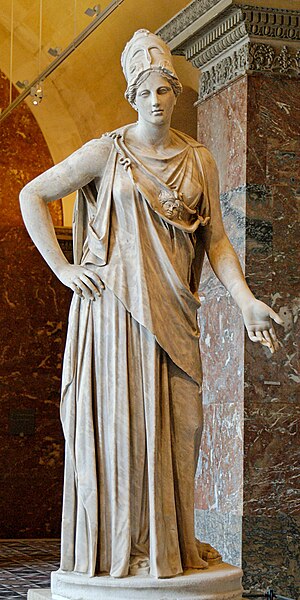Erichthonius (son of Hephaestus)
In Greek mythology, King Erichthonius was a legendary early ruler of ancient Athens. According to some myths, he was autochthonous and adopted or raised by the goddess Athena. Early Greek texts do not distinguish between him and Erechtheus, his grandson, but by the fourth century BC, during Classical times, they are distinct figures.
Birth of Erichthonius: Athena receives the baby Erichthonius from the hands of the earth mother Gaia, Attic red-figure stamnos, 470–460 BC, Staatliche Antikensammlungen (Inv. 2413)
Athena Scorning the Advances of Hephaestus, Paris Bordone, between c. 1555~1560
Erichthonius Released from His Basket by Antonio Tempesta (1606)
The Discovery of the Child Erichthonius by Peter Paul Rubens (circa 1615)
Athena or Athene, often given the epithet Pallas, is an ancient Greek goddess associated with wisdom, warfare, and handicraft who was later syncretized with the Roman goddess Minerva. Athena was regarded as the patron and protectress of various cities across Greece, particularly the city of Athens, from which she most likely received her name. The Parthenon on the Acropolis of Athens is dedicated to her. Her major symbols include owls, olive trees, snakes, and the Gorgoneion. In art, she is generally depicted wearing a helmet and holding a spear.
Mattei Athena at Louvre. Roman copy from the 1st century BC/AD after the Greek original Piraeus Athena of the 4th century BC attributed to Cephisodotos or Euphranor.
The Acropolis at Athens (1846) by Leo von Klenze. Athena's name probably comes from the name of the city of Athens.
Fragment of a fresco from the Cult Center at Mycenae dating the late thirteenth century BC depicting a warrior goddess, possibly Athena, wearing a boar's tusk helmet and clutching a griffin.
Ancient Akkadian cylinder seal (dating c. 2334–2154 BC) depicting Inanna, the goddess of war, armored and carrying weapons, resting her foot on the back of a lion








